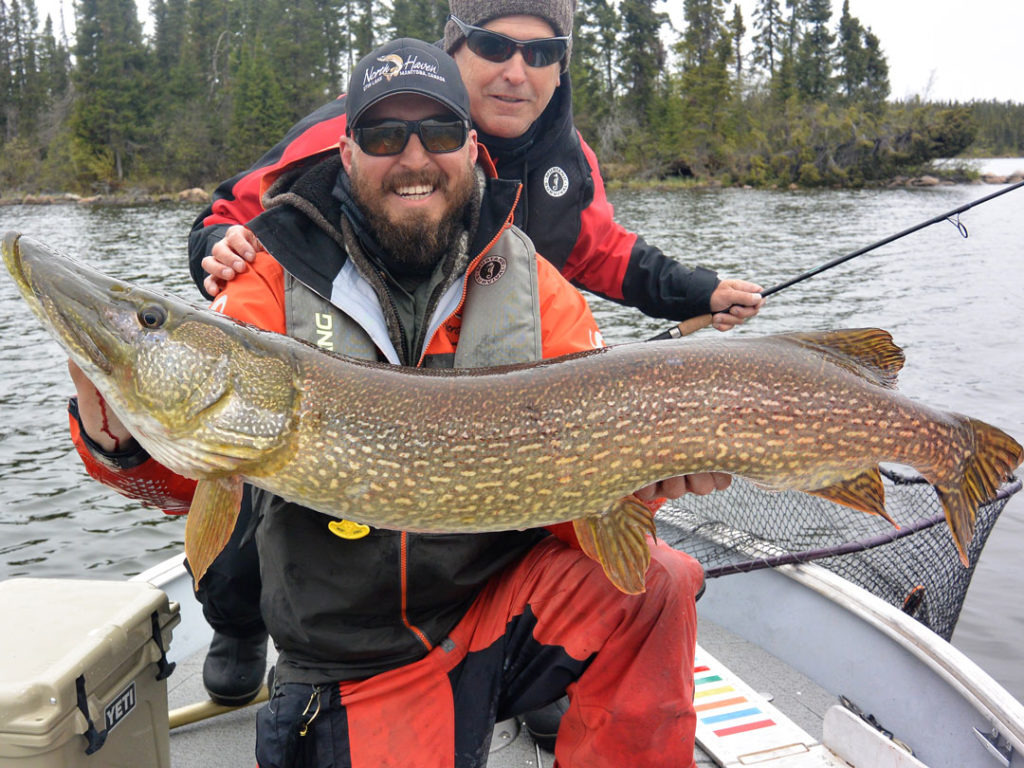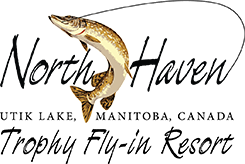How Northern Pike Transition During Summer, Spring and Fall

There is no doubt that northern pike are a popular fresh water species to target when sport fishing. Part of the reason they are so popular is their aggressive nature and seemingly never-ending appetite. Northern pike have a wide range and are abundant in many areas around the world. The remote lakes of northern Manitoba are one such area where northern pike flourish and Utik Lake is one of the top lakes in this area! Although they transition during the spring, summer and fall, northern pike are always a thrill to catch.
Spring Pike Transition
Spring is the time when most diehard anglers target northern pike. Weather can be a rollercoaster with snow, sun, wind and rain all in the same day! However, the reward for dealing with these varying conditions is an opportunity to catch and release giant northern pike. As winter fades away and the ice begins to melt, an infusion of light and oxygen rush into lakes. Next, the water begins to warm in the shallowest parts of the lakes. These factors all work together to trigger spawning. This is when huge northern pike tend to be at their most vulnerable. Often a small lure presentation or even a fly worked slowly can trigger an explosive strike.
Transition to Summer
The shallow bays that have been home to northern pike during spring are now becoming too warm. As the lake water continues to warm through summer, weed growth begins in the shallow to moderate depths. Triggered by an infusion of warm water and increased sunlight, dense weed beds quickly spread to many areas. These newly grown “underwater forests” offer a place for young fish to hide and feed. This in turn attracts northern pike, which are often the top predators in the lakes and rivers they inhabit. When fishing for northern pike during the summer months, you will often be focusing on weeds. Here it is key to have a lure that is either weedless or one that can be accurately casted and fished on the edges of weed beds. Northern pike are often hiding on the weed edges waiting to ambush unsuspecting prey.
Early Fall Transition

Fall is when the cool nights begin dropping the water temperatures. The decrease in daylight also triggers a change in the seasons for aquatic life. weed growth begins to slow down or stop, and predator fish are again on the move to shallower water. This is another time of year where some of the largest northern pike can be caught. Often casting larger lures will result in larger fish. Northern Pike are looking for as much food as they can find before the long cold winter sets in and food isn’t as plentiful. Fishing in fall is predominantly in shallow bays, but don’t forget about the deeper water transitions into shallower water too.
Northern pike are among the top game fish targeted by anglers looking for a true trophy catch. They are known for being plentiful in many areas around the world. One of the best places to fish for them is in the remote areas of northern Canada. Although they transition to different areas in a lake throughout spring, summer and fall, they are always accessible to anglers who know where to seek them out.
